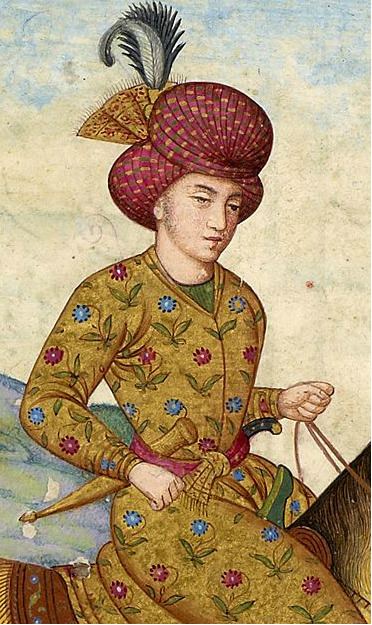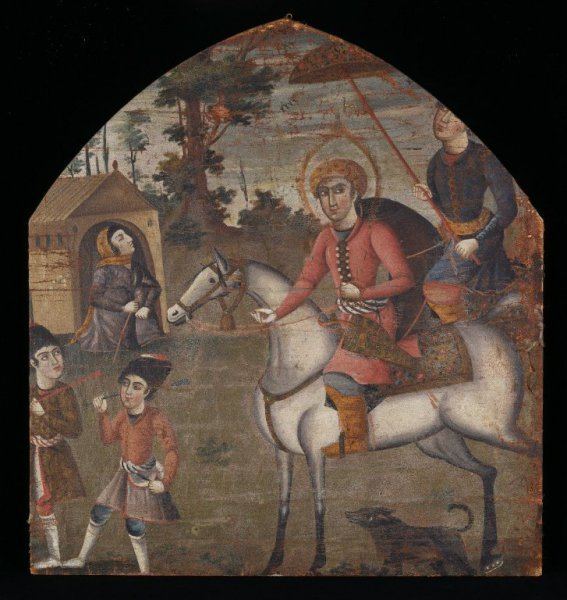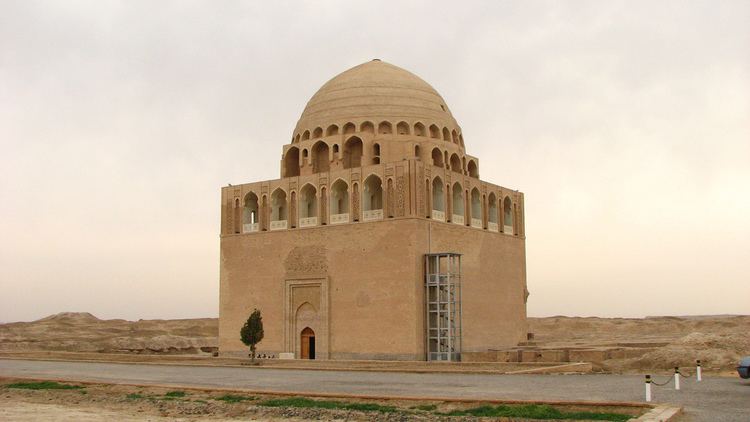Reign 1097-1118 Predecessor Muhammad I House Seljuq dynasty Reign 1118-1157 Parents Malik-Shah I | Successor Kara-Khitan conquest Name Ahmad Sanjar Predecessor Arslan-Argun Successor None Cousins Fakhr al-Mulk Radwan | |
 | ||
Spouse Turkan Khatun (m. ?–1156), Rusudan, daughter of Demetrius I of Georgia Similar People Malik‑Shah I, Alp Arslan, Yelu Dashi | ||
Mausoleum of Sultan Sanjar
Ahmad Sanjar (Persian: احمد سنجر; full name: Muizz ad-Dunya wa ad-Din Adud ad-Dawlah Abul-Harith Ahmad Sanjar ibn Malik-Shah) (b. 1085 – d. 8 May 1157) was the Seljuq ruler of Khorasan from 1097 until in 1118 when he became the Sultan of the Seljuq Empire, which he ruled as until his death in 1157.
Contents
- Mausoleum of Sultan Sanjar
- Turkmenistan Inside Sultan Sanjar Mausoleum Ancient Merv
- Biography
- Death and legacy
- References

[Turkmenistan] Inside - Sultan Sanjar Mausoleum, Мавзолей Санджара, 술탄 산자르 영묘 @ Ancient Merv
Biography

Sanjar was born in ca. 1086 in Sinjar, a town situated in the borderland between Syria and the al-Jazira. Although primary sources state that he was named after his birthplace (Rāvandi, p. 185; Ebn al-Jawzi, XVIII, p. 161) Bosworth notes Sanjar is a Turkic name, denoting "he who pierces", "he who thrusts". He was a son of Malik Shah I and participated in wars of succession against his three brothers and a nephew, namely Mahmud I, Barkiyaruq, Malik Shah II and Muhammad I. In 1096, he was given the province of Khorasan to govern under his brother Muhammad I. Over the next several years Ahmed Sanjar became the ruler of most of Iran (Persia) with his capital at Nishapur. A number of rulers revolted against him and continued the split of the Great Seljuq Empire that had started upon dynastic wars. In 1102, he repulsed an invasion from Kashgaria, killing Jibrail Arslan Khan near Termez. In 1107, he invaded the domains of the Ghurid ruler Izz al-Din Husayn and captured him, but later released him in return for tribute.

Sanjar undertook a campaign to eliminate the Assassins of Alamut, and successfully drove them from a number of their strongholds. However, an anecdote indicates that en route to their stronghold at Alamut, Sanjar woke up one day to find a dagger beside him, pinning a note from Hassan Sabbah stating that he (Hassan) would like peace. Sanjar, shocked by this event, sent envoys to Hassan and they both agreed to stay out of each other's way.

In 1117 he marched against the Ghaznavid Sultan Arslan-Shah of Ghazna defeating him at Battle of Ghazni and installing Arslan's brother Bahram in the throne as a Seljuk vassal.
Garshasp II, who had been imprisoned by Mahmud II, fled to the court of Ahmad, where he requested protection from him (Garshasp's wife was the sister of Ahmad). Garshasp urged Ahmad to invade the domains of Mahmud in Central Iran, and gave him information on how to march to Central Iran, and the ways to combat Mahmud. Ahmad accepted and advanced with an army to the west in 1119, where he together with five kings defeated Mahmud at Saveh. The kings who aided Ahmad during the battle was Garshasp himself, the Emir of Sistan and the Khwarazm-Shah, including two other unnamed kings. After being victorious, Ahmad then restored the domains of Garshasp II. Ahmad then marched as far as Baghdad, where he agreed with Mahmud that he should marry one of his daughters, and that he should give up strategic territories in northern Persia.
In 1141, Ahmad, along with Garshasp II, marched to confront the Kara Khitan threat and engaged them near Samarkand at the Battle of Qatwan. He suffered an astounding defeat, and Garshasp was killed. Ahmad escaped with only fifteen of his elite horsemen, losing all Seljuq territory east of the Syr Darya (Jaxartes).
Oghuz Turks from Khuttal and Tukharistan captured Ahmed Sanjar in 1153 and held him prisoner until 1156. While he was incarcerated, these same Oghuz Turks sacked Nishapur, killing the famous Shafi'i jurist, Muhammad ibn Yahya. Sanjar died in 1157 and was buried at Merv. His tomb was destroyed by the Mongols in 1221, during their invasion of the Khwarezmian Empire.
Ahmed Sanjar married Turkan Khatun (died 1156) and he had two daughters with her - wives of his nephew Mahmud II. After her death Sanjar married Rusudan, daughter of Demetrius I of Georgia, widow of sultan Masud Temirek. He had no children with her.
Death and legacy
The death of Sanjar meant the end of the Seljuq dynasty as an empire, since they only controlled Iraq and Azerbaijan afterwards. Sanjar is considered as the best Sejluq sultan and was the longest reigning Muslim ruler until the Mongols arrived. According to medieval sources, Ahmad Sanjar had "the majesty of the Khosrau's and the glory of the Kayanids". Persian poetry flourished under Sanjar, and his court included some of the greatest Persian poets, such as Mu'izzi, Nizami Aruzi, and Anvari.
